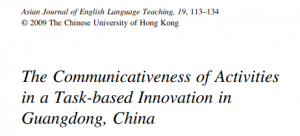11 Question in a ESL Teacher Interview – Do you offer housing assistance or a stipend? If so, what are the details? Here you’re trying to get a better understanding of how much help you’re going to get with housing, specifically related to how much of the cost you’re responsible for and if you’ll have help finding a place to live.

You can expect the employer to say a few things:
We don’t offer any assistance
We don’t offer a stipend but we can help you find a place
We have an apartment you can use but you must pay for it
Housing is included in the contract
How much help you want is up to you, but at least you’ll know what to expect when you arrive.
Do you reimburse any of the visa and arrival costs?
The process of getting to China is both lengthy and expensive and while teachers are expected to come out of pocket for most costs, it’s not uncommon to have them reimbursed at a later time. Similar to the previous housing question, here you want to get a better understanding of what you’ll have to pay for.
Costs can include any of the following so make sure to ask about each if you’re unsure:
Background check
Document authentication
Visa processing
Medical check
Flight to China
Hotel upon arrival
All of these are negotiable but in my experience, the school should always pay for all visa and work permit costs while things like flight reimbursement are more wishful thinking.
When is payday?
It’s common for Chinese schools to pay their teachers mid-month so that if you break your contract you are potentially left without 2 weeks’ pay. A red flag would be if they pay any later than the 15th of the following month and I’d make a point to clarify why that is and potentially mark it for later contract negotiation.
Learn more about this topic by reading on ChinaByTeaching.
After reading “11 Question in a ESL Teacher Interview” you can check important issues for ESL teachers on the section PDFs, and visit my YouTube channel.


